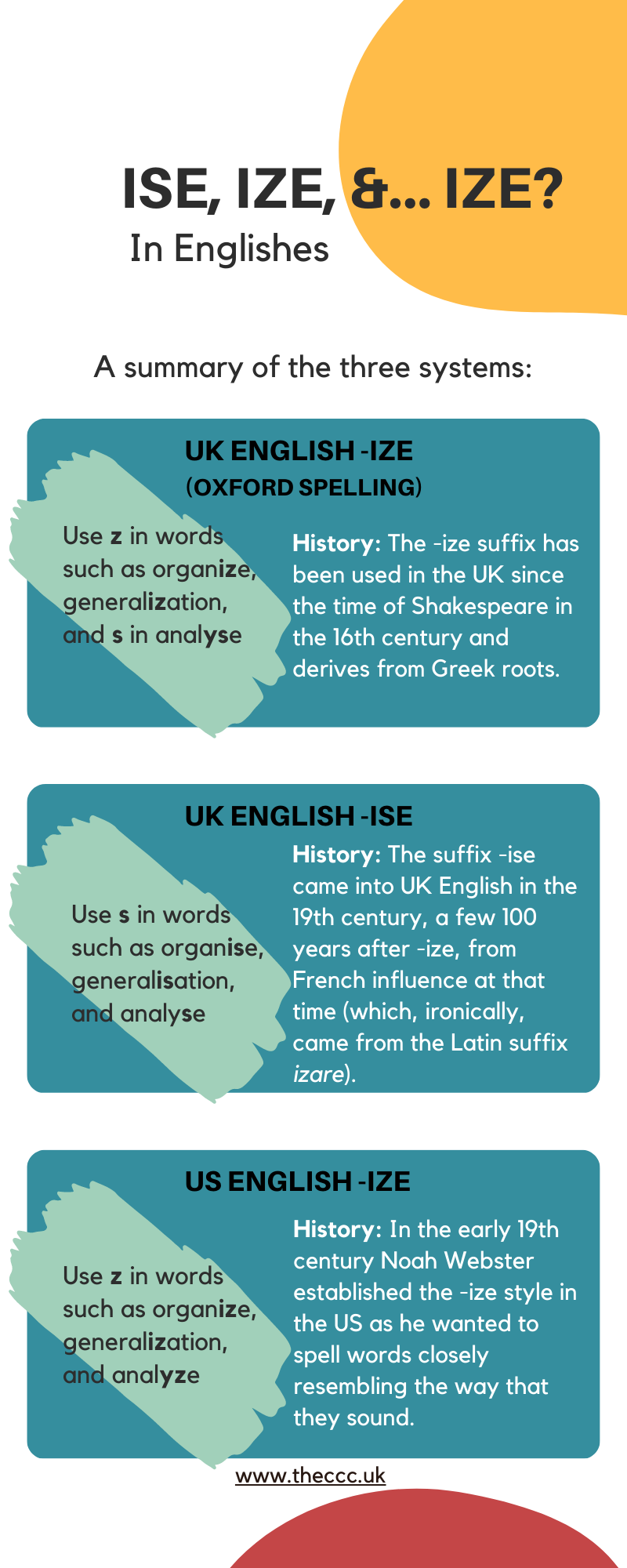|
We were very disturbed to find the following article in the online edition of the Connecticut Express-News. London, April 1, 2023—The Brexit vote in 2016 brought about a lot of changes for the United Kingdom, including its relationship with the European Union and its place in the global economy. As the UK looks to establish its new position in the world, it has the opportunity to make some changes that could benefit its people and businesses. One potential benefit is the so-called "Brexit dividend" of spelling reform. By adopting the same spelling as the United States, the UK could make it easier for its people and businesses to communicate with their American counterparts, potentially opening up new markets and opportunities. The United Kingdom and the United States share a common language, but they use different spellings for some words. For example, the word color is spelled colour in the UK, and the word center is spelled centre. This difference in spelling can cause confusion and make communication more difficult between the two countries. Therefore, it would be beneficial for the UK to use the same spelling as the US. In today's world, people communicate with each other across borders more than ever before, thanks to the internet and social media. Spelling differences can cause confusion and misunderstandings, leading to mistakes and even conflicts. Using the same spelling will reduce the chances of miscommunication and make communication smoother. Noah Webster, head of the not-for-profit venture Words for Business, said the case for reform to promote consistency and standardization was unanswerable: When everyone uses the same spelling, it becomes easier to read and write texts. It also helps to establish a standard for education and business, making it easier for people to learn and conduct business across borders. The government is said to be supportive of the move. Meriam Arnold, an official in the Department for Business and Trade commented, “Some people argue that the UK should preserve its own unique spelling, as part of its cultural identity or that the differences in spelling are simply a reflection of the countries' different histories and that they should be celebrated rather than erased". However, these arguments are irrelevant today. With the world becoming increasingly interconnected, it's more important than ever to promote understanding and cooperation across borders. Using the same spelling is just one small step in that direction. No longer should it be said that the United States and the United Kingdom are two countries divided by a common language.”
0 Comments
Zoe Wildsmith I find people comment to say they’re surprised that I use American -ize endings in my writing (given I’m British – and an editor to boot). I explain that it’s the UK system I’m using. I was taught to write using the Oxford rules -ize ending at school. (Besides, I have a biased reason for liking the letter Z because of my name!) Not only that, but the -ize spelling is closer to the way we say such words. Over the last decade or two, I’ve observed the -ise ending (from French) has become more popular in British English. As a business we’ve adapted our use of the suffix for the majority of UK clients (and for those elsewhere wanting to localize their content for the UK). It is perhaps seen as a more “British” way of writing than the older -ize (from Greek via Latin), which can be mistaken for an Americanism. Which is intriguing, given our world is leaning towards internationalization, and products and services are becoming ever more global so a system that works across Englishes would seem the most logical. But language isn’t under our control, and the increased preference for -ise in UK English copy speaks volumes to how important it is that content feels local, for locals. is british english ise or ize?There are three systems in English for the use of the suffix -ize or -ise. In UK English, we have two valid systems: -ize (Oxford spelling) or -ise in words such as realize/realise and standardize/standardise. The use of either system is a style choice, and both systems are correct, so long as they’re used consistently. In US English it’s -ize only.
So, perhaps using -ise is an easier way for Brits to do it, as we don’t have to remember the exceptions to the rule? Use the right system for your target audience and, so long as you stick to that system consistently in one piece of writing, it’s “correct” (we use that term carefully with regard to language, see Why is Language so Important?).
Whichever system is used, none is wrong. We do find, however, that if we’re localizing US text to UK English, the client (from anywhere in the world) requires the -ise system to be implemented. On the other hand, if international English is desired, we would recommend using the UK -ize endings since they suit both UK and US spellings in the majority of cases, and it is these two varieties of English that have spread across the world. Zoe Wildsmith “Imagine that you are watching a nature documentary … the song of the humpback whale contains several well-known errors, and monkeys’ cries have been in a state of chaos and degeneration for hundreds of years.” There's no doubt about it, we're fascinated by language. Hence the widespread sharing of images on social media, like this comic strip about an allergy to grammatical errors. (NB: I too suffer from this allergy, and it’s not seasonal.) And there’s even a society devoted to promoting “good” English.
Perhaps the title of this blog post ought to be Why do we Find Discussing Language so Fascinating?, because it’s clear that we will never bore of discussing language issues. Whether humans or animals it’s to our advantage that we can communicate, and as humans we’re unique in being able to do that via language. Since communication is fundamental to language, as long as we get our message across, why does it matter how we do it and whether the grammar is correct? As children, we have an innate ability to acquire a language system, without being explicitly told the rules, hence a four-year-old might say words like sheeps, because subconsciously she’s learnt that the suffix -s makes a word plural – she has of course never heard an adult say sheeps and copied them. Each language has its own rules that enable us to communicate – we agree on these rules therefore we understand each other. If those rules are broken extensively then we might be unable to understand the message a person is trying to communicate. There are many prescriptivists who take this to the extreme and delight in admonishing other people’s “errors”, or cringe in dismay at things such as grocers’ apostrophes. Critical attitudes to language are all around us, but, as the above quote from Steven Pinker demonstrates, they are often nothing but unjustified value judgements. What does it matter how we say or write something if it can be understood? When talking about language, we need to differentiate between the contexts in which language occurs. Formal, written language such as a newspaper article is very different to written text speak, for example. I doubt there’s anyone who doesn’t understand the message of the character on the right in the cartoon. So what does it matter that grammatical and spelling errors are used? If I try really hard, the editor in me can read it without dying inside too much, but it’s the final use of pacific (for “specific”) that is the sucker punch. As much as I understand the sentence, I can’t get past the error so it distracts from the message. And in writing, if we don’t adhere to the same system, the deviations will become so extreme that we no longer understand one another. Let’s not forget though, that an inherent property of language is that it constantly evolves. If it didn’t, we’d still be speaking and writing like Chaucer in the UK. We can’t stop this evolution but we can try to keep it on track politely, with grammatical conventions so that comprehension doesn’t suffer. Writer: Teodora Gaydarova Editor: Zoe Wildsmith Writing for the Web is not unlike keeping the attention of a five-year-old. It can be challenging to compel anyone to stay longer on a web page or read a blog post given that our attention spans are shrinking and we are constantly being bombarded with information. The odds are you probably won’t read to the end of this blog article. The problem is people don’t really read online. Instead, they scan, skim and move forward. Really fast. So fast, statistics reveal that on average visitors spend between 10 and 20 seconds (you read that right – seconds, not minutes) on a web page. As this BBC journalist argues it’s hard to know whether digital technology is to blame for our inability to focus, but one thing is certain: whatever you write for the web, whether a booking page to sell your dog-grooming services, or a blog post on the benefits of recycling, luring readers to linger longer is crucial to getting results. As with any medium, there are tricks and techniques to achieving that. Key info goes to the topNot only will readers spare you just a few seconds, but they won’t scroll too far down. That’s why, when writing your article or web page, you have to make the headline and first few sentences as informative and intriguing as possible. A catchy title and an engaging intro also help to capture attention and draw readers in to read further. Curious facts, striking statistics or a sense of humour can all go a long way here. Journalists call this technique the inverted pyramid. Summarising the main idea of a story in the title and the first paragraph allows readers to take away the main message without having to read the whole piece. Last but not least, visitors could land on your page from anywhere on the web. If it’s clear what your text is about and it’s relevant to them, they are less likely to leave. The KISS is keyThe logic behind it is as simple as its name. First: keeping things short helps distracted readers to focus. That doesn’t mean you can’t write long-form content of a few thousand words. You can. It simply means that short sentences and short paragraphs are easier to digest. Pretty much like the ones you are reading now! War and Peace-style paragraphs, on the other hand, strain the eyes and make finding information really difficult, which puts readers off. Second: simple, clear language creates more impact. Simplicity of style is not a radically new idea that has been invented in the digital age. Master copywriters and great orators alike have been using succinct language for ages. Take Martin Luther King Jr.’s, I Have a Dream speech as an example. Make your message crystal clear and even the most distracted reader will take something away. Puzzle or confuse readers with convoluted logic, and you risk losing them. One way to achieve that is by avoiding the passive voice, flowery phrases and complex jargon, which only experts might understand. Write for that imaginary five-year-old and you are almost there. Make it a visual experienceWhen it comes to writing for the Web, formatting is your best friend. Think about your material as a mini textbook. Textbooks employ a number of formatting tricks to make the information easy to process and memorise – the same applies to the web. You can, for example:
Once again, it all boils down to simplicity and digestibility. Be easy to findThe Internet exists so we can find information – keep that in mind when writing your articles. You can share your content on social media, of course, but you want to be found by everyone, not just your followers. First, it’s crucial to use relevant keywords throughout your text to allow search engines to index it and show it to potential visitors. A shopper googling red ladies’ shoes, size 7 is much more likely to visit your ecommerce page selling such shoes if it contains those terms. The same applies to hyperlinks. If you are writing a blog post about matching shoes with dresses, it makes sense to insert a hyperlink to a page where readers can browse and order from your latest collection. Call to actionLast but not least, don’t leave people guessing what they are supposed to do after reading your content. Do you want them to share your article, sign a petition, book a consultation, or buy your new product? Just tell them – plain and simple. And with that, please share this article, if you find it useful.
Writers: Georgina Burke and Zoe Wildsmith Editor: Zoe Wildsmith “Sometimes with The New Yorker, they have grammar rules that just don't feel right in my mouth.” – David Sedaris There's no doubt about it, we're fascinated by language. Hence the widespread sharing of images on social media, like this comic strip about an allergy to grammatical errors. (NB: We too suffer from this allergy, and it’s not seasonal.) And discussions in the news, such as this BBC article about textspeak. Perhaps the title of this blog post should be Why do we find discussing language so fascinating?, because it’s clear that it's the subject that keeps on giving. Communication is common to most animals in some form or another (bees even waggle dance!) and as humans we’re unique in being able to do that via a complex spoken and written language. Even as a single species, our languages are many and varied. What is grammar?Whatever language we speak, there are rules and regulations that we follow to ensure we are all working to the same system. Hello, grammar! We start learning grammar subconsciously from the moment we begin to string together our first words. “I do it” as opposed to “Me do it”, for example. We correct our children's language as they develop and grow... “No darling, it's sheep, not sheeps; it's thought, not thinked”, and the like. But these kinds of errors are proof that children are acquiring a grammatical system and applying those rules – plural -s, past tense -ed. We all learn the rules as we go along and we all communicate with each other just fine, thank you very much. And so to written grammar. We are taught “correct” spellings and punctuation throughout our school years and then, for many of us, somewhere along the line it starts to evaporate from our increasingly overcrowded brains, competing for space along with what we are doing for dinner that night and the best way to get cat hairs off the sofa. We start to doubt our own knowledge and wonder if we should be using single or double inverted commas. Or are they quotation marks? The real question is, if the grammar rules are broken, where does that leave the whole system and does it really matter? If those rules are broken extensively then we might not understand the message a person is trying to communicate. There are many purists who take this to the extreme and delight in admonishing other people’s “errors”, or cringe in dismay at things such as grocers’ apostrophes. But what does it matter how we say or write something as long as it can be understood – and is it ok that we started a sentence with but? When talking about language, we need to appreciate the contexts in which language occurs. Formal, written language such as a newspaper article is very different to typed text speak, for example. If we tweet or send a text, we use abbreviations to save time typing and reading, but not at the expense of comprehension (usually…). We also love a good emoji, which is a different form of language altogether, and fertile ground for another blog post. However, if writing a news article, or even a more informal blog post, we’d have to be strong-armed into typing ur for “your”. Most people understand the difference between formal and informal writing and alter their punctuation and spelling accordingly, often without even thinking about it. Evolution of languageLet’s not forget though, that an inherent property of language is that it constantly evolves to fit the world in which we live. If it didn’t, we’d still be speaking and writing like Chaucer in the UK. We can’t stop this evolution but we can try to keep it on track by using the right grammar and spelling to suit the context. Technology has introduced us to so many new concepts, sometimes it's hard to keep up with the new vocabulary and grammar that comes with it. Check out this great list from How Stuff Works that perfectly illustrates this point. How many words do you use on a daily basis that you wouldn't have known 10 years ago? Occasionally, though, we need a grammar check – a helping hand with our written grammar and punctuation, to ensure we're not committing some heinous crime with a misplaced comma or em dash. Reference booksFor those lucky people with the time and the space on shelves, there is no shortage of reference books and guides to refill your mind with the hows, whys and wherefores of good grammar. Head towards the reference and education section at your local bookshop and you will find an abundance of books to aid your journey to linguistic perfection. You can't beat a good old-fashioned dictionary to check your spelling and most larger versions will have a grammar section for additional information. Couple this with a thesaurus and you'll never be lost for words again. If you're after a bit of light reading, Lynne Truss's Eats, Shoots and Leaves is a wonderfully humorous approach to educating us about grammar and punctuation. Get onlineFor those of us checking our written work on the hoof, we can turn to one of several online tools to help keep us on the grammatical straight and narrow. Websites such as Dictionary.com, Thesaurus.com or Grammarly.com provide an online grammar check, with lots of ways to review your work for spelling and grammar mishaps. Grammarly allows you to upload Word or PDF files for a thorough going-over, or you can ask it to check your text as you type. Call in the expertsWhen all is said and done (and written), there is nothing like the human eye for picking out misuse of even correctly spelt words, phrasing or writing that just doesn't sound right, as well as silly spelling, potty punctuation and ga-ga grammar. At The Content Creation Company, our proofreaders are trained to spot the smallest of errors, and our copy editors can review and rework texts to suit the subject matter and intended audience.
With our extensive network of international collaborators, we can bring the right people to the right job, working in many different languages and cultural contexts. This is particularly important when taking your product or service into a new market. Even where there is a common language, we can help you make sure your text is hitting the spot with your new audience. As editors, we don’t know everything about the grammar of English. But our mantra is “if in doubt, look it up”. Being a good copy editor is about knowing when to question something, not knowing everything. Writer: Georgina Burke Editor: Zoe Wildsmith These days, “content” is everywhere. It’s the buzzword, the mot du jour, the word on everyone’s lips. The modern marketeer’s motto is “Content is king”. But what does it mean? What does it do? And for whom? In a nutshell, content is information that is useful, relevant, humorous or engaging. Content has a story to tell, or an idea to express. Let’s be clear; there is a difference between traditional content creation, or copywriting as it would have been known, and the modern sense of content. Or rather, nowadays the word content means so much more than just copywriting. We now engage with our information in so many new ways, but the principles still remain as pertinent as ever. As content creators, it is essential that we understand our audiences and our channels to get our content to work in the right way. Content goes beyond the words we are reading, right here, right now. Very often, we are invited to click here for more info, swipe up or down, left or right, to go to the next nugget of content gold. It can make us laugh or cry; it can pique our curiosity and make us want to know more. It can make us remember the past or look ahead to the future with excitement or foreboding – or often both. Start with the end in mindWhatever your product, service, message or story, your final destination will be your audience understanding what they are seeing and engaging with it. By engaging, it could mean that they find it relevant or interesting, thought-provoking or mind boggling, informative or just downright funny. They are getting something out of it, and, importantly, they don’t have to work too hard to get it. Maybe your objective is to explain the rules of a new board game to an eight-year-old and an eighty-year-old at the same time, or you’re coming up with trivia questions suitable for families with children. Perhaps you are producing a scientific report for both academics and policymakers. Or it could be that you are writing an op-ed article for an online newspaper read by the general public as well as peers. Language mattersWherever you’re heading, you need to know your audience and have an understanding of what they need to take away from the content. Get to grips with their language, culture and the circumstances in which they are consuming this information in order to connect with them with authenticity and relevance. A scientific research paper will have a very different tone of voice to, say, humorous phrases for an adult board game. Fill your content with the wrong terminology or too much jargon, and you can kiss goodbye to your audience. Be consistently authentic and relevant and they will come back for more. Operating in an international environment brings its own challenges. Creating content that works across borders is tricky, as cultural references and traditions are different, even where a common language is shared. Bringing in collaborators from your target market can help overcome these issues, as they introduce well-known local touchstones and steer you away from linguistic faux pas and figures of speech that can get lost in translation. We love this list of advertising slogans that went wrong when the brands went global. Accuracy and credibilitySimilarly, inaccurate or debatable information can lead you into difficulties. Know your facts and double check them before you publish. If you’re not sure about something, ask someone with expert knowledge or fact-checking experience. Build fact-checking into your content creation process, particularly if you need it to be indisputable, such as in trivia question writing, news article writing or museum display panels. Getting it wrong can result in your audience losing faith in your credibility as a provider of accurate information. Use reliable sources so that you can publish your content with confidence. More than wordsTo paraphrase the words of that phenomenally successful 1980s British girl band Bananarama, it ain’t what you say, it’s the way that you say it. Or in this context, the way you display it. Content is more than just the language you use; visual cues within and around the text will help your audience understand what they’re reading and what they are expected to do. The use of colour, layout, imagery, font type, headings, bullet points and lists will make your content accessible, simple to navigate – and your audience will know what is expected of them. This is especially applicable where time is of the essence, during a fast-paced board game for example, or if describing a museum object or writing a set of instructions. Equally, a large social-ecological report benefits from thoughtful formatting to aid the reader in digesting the information. Presenting your content in the right way will inform your audience how to read your content and what to do next. In conclusionUltimately, your content is a vehicle for establishing a connection with your audience, no matter who – or where – they are. Great content will demonstrate that you know and understand them, and a sense of trust will follow.
|
say what?Read our blog to get an idea of what we do, how we edit, how we organise projects... and learn about grammar and linguistics – some of the foundations of our work. Archives
April 2023
Categories |





 RSS Feed
RSS Feed
